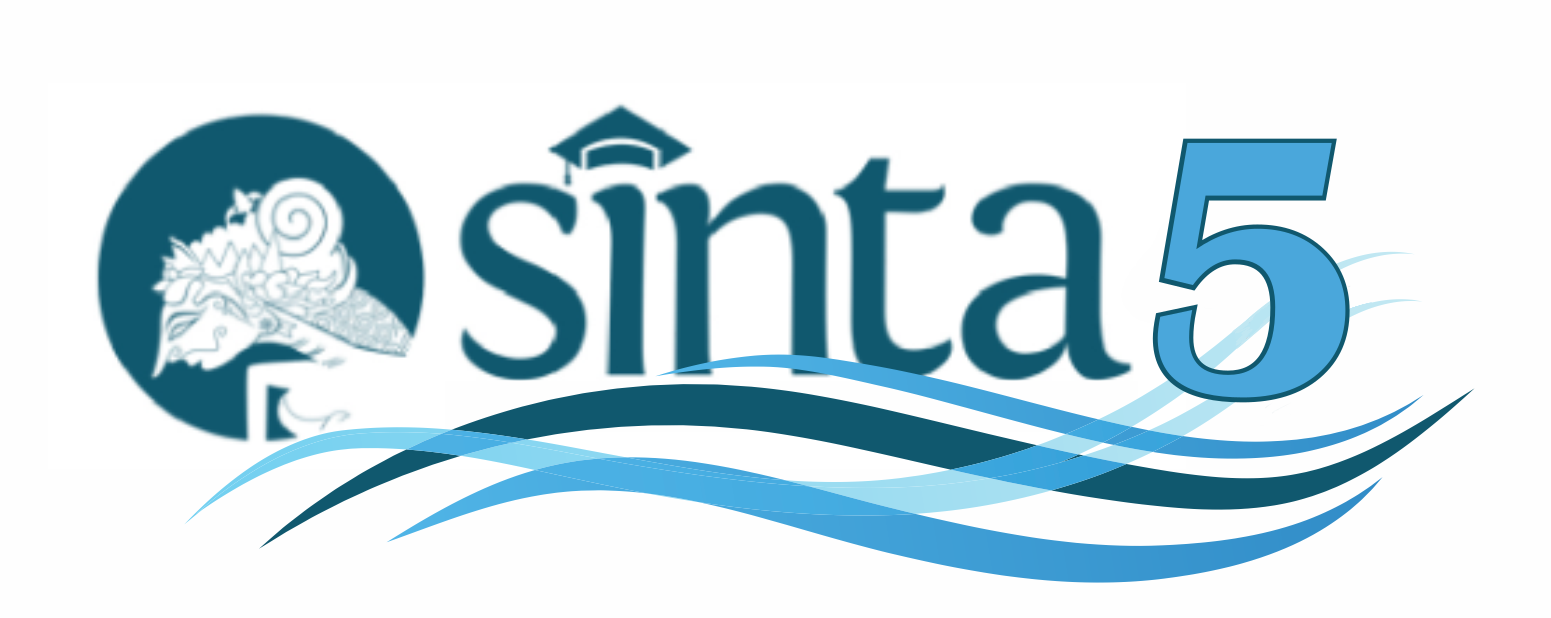Identifikasi Sifat-Sifat Fisik Mata Jaring Gillnet Terubuk (<i>Tenualosa macrura</i>)
DOI:
https://doi.org/10.31957/acr.v6i2.3435Keywords:
Correlation, geometry, gillnet, mesh sizeAbstract
The aim of this research is to identify changes in net geometry and analyze the correlation between the physical properties of the net and the geometry of the net that has been used for 1 to 3 years. The research used an experimental method by directly measuring the geometry of the net, namely mesh size, net diameter and knot height. The research also analyzed data on breaking strength and net elongation which were correlated with net geometry. The condition of the net when tested was dry. There were 4 treatments used in the research, namely control nets, nets that had been used by fishermen for 1, 2 and 3 years. The results of the research stated that the highest average gillnet mesh size value was for the 2 year net treatment and the lowest was 3 years. The highest average value of net diameter was the 1 year net and the lowest was the 2 year net. Meanwhile, the highest average gillnet node height is 1 year and the lowest is 3 years. The correlation value of net geometry with breaking strength has varying values. Breaking strength is closely related to the height of the knots in the mesh with a positive value of 0.77, whereas for mesh elongation all the mesh geometry indicators have negative values, so each increase in the mesh geometry value will decrease the elongation value.
Downloads
References
[Kepmen KP] Keputusan Menteri Kelautan dan Perikanan nomor 59. 2011. Penetapan Status Perlindungan Terbatas Jenis Ikan Terubuk (Tenualosa Macrura). Jakarta: Jaringan Dokumentasi dan Informasi Hukum, KKP.
[Kepmen KP] Keputusan Menteri Kelautan dan Perikanan nomor 43. 2016. Penetapan Status Perlindungan Terbatas Jenis Ikan Terubuk (Tenualosa ilisha). Jakarta: Jaringan Dokumentasi dan Informasi Hukum, KKP.
[Permen KP] Peraturan Menteri Kelautan dan Perikanan nomor 18. 2021. Penempatan Alat Penangkapan Ikan Dan Alat Bantu Penangkapan Ikan Di Wilayah Pengelolaan Perikanan Negara Republik Indonesia Dan Laut Lepas Serta Penataan Andon Penangkapan Ikan. Jakarta: Jaringan Dokumentasi dan Informasi Hukum, KKP.
[Pusdik KP] Pusat Pendidikan Kelautan dan Perikanan. 2015. Modul Mengoperasikan Jaring Insang (Drift Gillnet). Jakarta: Pusat Pendidikan KP.
Bonvechio, K.I., Hooley, S.M., Crawford, S., Sawyers, R.E. 2012.Comparison of Sinking and Floating Gill Nets for Collecting Shads (Dorosoma spp.) in Shallow Florida Lakes. Lake and Reservoir Management 28:1-9.
Dar, S.A., Thomas, S.A., dan Chakraborty, S.K. 2017. Design and Technical Characteristics of Shark Gillnet Operating in Mumbai Coast. Journal of Applied and Natural Science 9(2):851-854.
Dwi, N.D.A., Purnama, F.A.D., dan Dian, W. 2019. A Technical Study of Modified Gillnet in Kendal Regency Waters. RJOAS 8(92): 187-196.
Fridman, A.L. 1986. Calculation for Fishing Gear Designs. Cambridge: Fishing News Books Ltd.
Jin, C., Kim H.S., Kim M.H., Kim, K. 2019. Monotirng System Development for a Bottom Set Gillnet Througt Time Domain Dinamic Simulation. Applied Science (9):1-20.
Karwapi. 1979. Pendidikan Keterampilan Perikanan Departemen Pendidikan dan Kebudayaan.
Kholis, M.N., Wahyu, R.I., dan Mustaruddin. 2017. Keragaan Apek Teknis Unit Teknologi Penangkapan Ikan Kurau di Pamang Pasir Kabupaten Bengkalis Provinsi Riau. Jurnal Teknologi Perikanan dan Kelautan 8(1):67-69.
Martasuganda, S. 2002. Teknologi Penangkapan Jaring Insang. Bogor: Institut Pertanian Bogor.
Nasution, L.M. 2017. Statistik Deskriptif. Jurnal Hikmah. 14(1): 49-55.
Prado, J dan Dremiere P.Y. 1991. Petunjuk Praktis Bagi Nelayan. Translated by Fauzi, Zarochman, Nur Bambang, Dulgofar, and Baithur Sjarif. FAO. Semarang: BPPI.
Puspito Gondo. 2009. Perubahan Sifat-Sifat Fisik Mata Jaring Insang Hanyut Setelah Digubnakan 5, 10, 15 dan 20 Tahun. Jurnal Penelitian Sains 12(3):1-6.
Pravin, P., Thomas, S.N., Meenakumari, Baiju, M., Baruah, D., Barmann, J., Kakati, B., Daimari, P., Mumtazh, V.R. 2009. Design and Genral Characteristik of Gill Nets of Assam. Fishery technology 46(2):107-122.
Safitri, I dan Adelita, K. 2018. Perikanan Tangkap Gillnet di Pelabuhan Perikanan Nusantara (PPN) Pemangkat Kalimantan Barat. Jurnal Laut Khatulistiwa 1(1):19-24.
Siregar, S. 2015. Statistik Parametrik untuk Penelitian Kuantitatif. PT. Bumi Aksara. Jakarta.
Shadori. 1985. Bahan Alat Penangkapan Ikan. Jakarta: CV. Yasaguna.
Sholokhah, A. 2016. Statistik Deskriptif Dalam Penelitian Kualitatif. Komunika. 10(2): 342-362.
Sudirman, H dan Mallawa, A. 2004. Teknik Penangkapan Ikan. Jakarta: Penerbit Rineka Cipta.
Steel, R.G.D. dan Torrie, J. H. 1980. Prinsip dan Prosedur Statistika: Suatu Pendekatan Biometric: Principles and procedures of statistic. Jakarta: PT Gramedia.
Taufiqurrahman, Syofyan, I. dan Sari, E.Y. 2017. Design and Construction of Gillnet in The Village Nipah Panjang 2 Subdistrict of Nipah Panjang Tanjung Jabung Timur Regency Province of Jambi. Jurnal Online Mahasiswa (JOM) Bidang Perikanan Dan Ilmu Kelautan 1-15.
Thomas, S.N. dan Hridayanathan, C. 2006. Design and General Characteristics of Marine Gill Nets of Kerala. Fisheries Technology 43(1):17-36.
Tri, P.R., Purnama, F.A.D., dan Wijaya, S.S. 2019. Construction Analysis of Bottom Gillnet As An Alternative To Bottom Trawl in Pekalongan Waters. RJOAS 4(88): 153-159.
Wijipriono, Nugroho, D., dan Sadhatomo, B. 2012. Trens Pemanfaatan Sumberdaya Ikan Kurau di Perairan Bengkalis, Selat Malaka. Jurnal Penelitian Perikanan Indonesia 18(4):205-212.
Downloads
Published
Issue
Section
License
Copyright (c) 2023 ACROPORA: Jurnal Ilmu Kelautan dan Perikanan Papua

This work is licensed under a Creative Commons Attribution-NonCommercial-ShareAlike 4.0 International License.
Authors who publish with this journal agree to the following terms:
- Authors retain copyright and grant the journal right of first publication with the work simultaneously
licensed under a Creative Commons Attribution-NonCommercial-ShareAlike 4.0 International License
that allows others to share the work with an acknowledgement of the work's authorship and initial
publication in this journal. - Authors are able to enter into separate, additional contractual arrangements for the non-exclusive
distribution of the journal's published version of the work (e.g., post it to an institutional repository
or publish it in a book), with an acknowledgement of its initial publication in this journal. - Authors are permitted and encouraged to post their work online (e.g., in institutional repositories or
on their website) prior to and during the submission process, as it can lead to productive exchanges,
as well as earlier and greater citation of published work (See The Effect of Open Access).




















